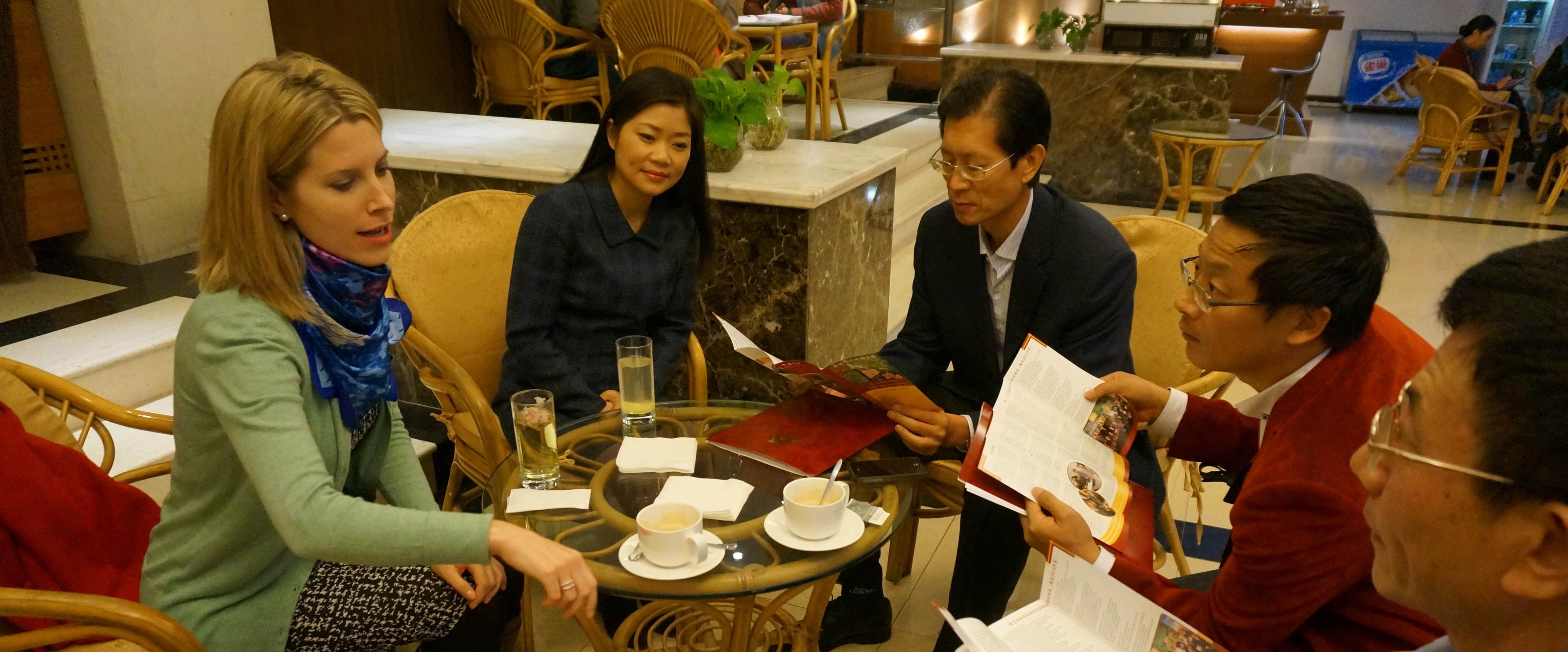 Editor’s Note: October 10 is World Mental Health Day. We asked Ms. Huang, program manager for the Chinese Overseas Flagship Program, to talk about the positive impact mindfulness can have, particularly during study abroad experiences.
Editor’s Note: October 10 is World Mental Health Day. We asked Ms. Huang, program manager for the Chinese Overseas Flagship Program, to talk about the positive impact mindfulness can have, particularly during study abroad experiences.
What’s the first image that comes to mind when you hear the word ‘mindfulness’? Is it an idyllic scene of Bohemians in long skirts frolicking across a green field? Or, do you perhaps see a young monk serenely sitting within a Buddhist temple in lotus pose? For many people unfamiliar with mindfulness practice, these may be the stereotypes readily available. Yet, mindfulness is becoming increasingly mainstream; in fact, research shows that Mindfulness-Based Stress Reduction (MBSR), is an effective tool to help individuals reduce stress, pain, anxiety and other symptoms, and improve quality of life. And it’s a tool I encourage all the study abroad participants I work with to use.
Since 1979, there has been a tremendous amount of research coming out of Harvard, UCLA, Stanford, UW-Madison, and other high-ranking institutions providing us with insights into how MBSR can change our brains for the better.
Mindfulness is defined as “the practice of maintaining a nonjudgmental state of heightened or complete awareness of one’s thoughts, emotions, or experiences on a moment-to-moment basis” (Merriam-Webster’s dictionary, 2019).
Huh? Okay, before you click this window closed, let me explain.
Essentially, there’s a moment of choice before we react to stress and pain in life. However, for many of us, we’re unaware of this moment because we’re stuck in a pattern of reacting to life. For example, maybe someone cuts in front of us in line for nachos (we’ve already been there for 20 minutes; these are really good nachos) and we immediately think, “what is wrong with that guy?” while our heart beats faster, our hands curl into fists, and our breathing rate quickens.
This is stressful! This reaction is fueled by a completely unconscious interaction between our thoughts, feelings, emotions, and behavior. MBSR helps us become more aware of these response patterns so we can learn new ways to interrupt this cycle. In the future, we can become more aware of our reactions to moments of stress like the example above and can choose to take a few deep breaths, let our shoulders relax (they’re up around our ears), and consider the possibility that the jerk in front of us is just having a bad day. By breaking these automatic response patterns, we realize that we have much more control over our thoughts, feelings, reactions, and stress levels than we thought.
But how does this apply to study abroad? I’m glad you asked.
Mindfulness can play a wonderfully positive role in enhancing the study abroad experience. By learning mindfulness techniques, students will often develop an improved capacity for self-reflection and the ability to encounter a new cultural environment in a positive way that will lead to increased intercultural sensitivity. Sounds pretty cool, doesn’t it?
As an international educator working with students who engage in intensive Chinese language study abroad for a year, I have seen a sharp rise in both diagnosed and self-reported cases of anxiety and depression. Even students with anxiety disorders that are under control with a combination of medication and therapy in the US sometimes experience a recurrence of symptoms when immersed in an unfamiliar and challenging environment. This is why I’ve focused both pre- and in-country workshops on mental health. These workshops provide students with statistics about mental health conditions currently presenting among college-aged students, how study abroad can exacerbate those conditions, and clear steps students can take to reduce stress and stay focused.
There are always several students who come up to me afterwards with personal questions or a request for additional resources. I want so much to tear away the stigma that is still attached to the issue of mental health. So many students suffer needlessly either because they are too embarrassed to ask for help or because they haven’t been exposed to much information about mental health in their communities and think they are simply abnormal. Nothing could be further from the truth!
When thinking about how to help students with anxiety, I turned to several case studies. One of these studies was conducted by a Georgetown University psychiatrist, who hoped to demonstrate that learning mindfulness meditation results in a lower stress response in people with generalized anxiety disorder, or GAD. The study, which was published in Psychiatry Research, revealed that an eight-week mindfulness-based stress reduction course resulted in large drops in stress biomarkers during a laboratory stress task. In contrast, a general eight-week stress reduction course that focused on good nutrition, sleep habits, and similar wellness topics actually resulted in a slight rise of these biomarkers.
Now that I’ve shared all of this information, you’re probably wondering what to do with it. In the workshops I present to my students, I always conclude by teaching them several simple mindfulness exercises. (They really can be very simple.) For example, one great exercise involves a raisin. This exercise can be attempted by anyone with any kind of food, although one with an interesting or unusual texture, smell, or taste can be helpful. In this exercise, students pretend they have never seen a raisin before. They pay careful attention to the way it looks, how it feels, how their skin responds when touching it, how it smells, and the way it tastes. Focusing on the single object of the raisin is meant to bring the students’ minds to the present, to what is right in front of them. They may be used to raisins, but not used to taking time to really notice them. Most essentially, by focusing on the raisin in their hand and making a point to notice everything about it, they are unlikely to be expending energy, time, and attention worrying or (most especially) ruminating about other parts of their lives. I also remind students that it’s perfectly normal if their minds wander during the exercise. If that happens, they should simply gently guide it back to the exercise.
Life can be unpredictable, and life abroad even more so. I hope that the information I provide to my students gives them a great springboard from which to explore the resources for maintaining good mental health that work the best for them during their time overseas.
There are myriad numbers and types of mindfulness exercises available to read about or try on the web. Some interesting websites include the following:
1. Sample medical symptoms helped by MBSR (link)
2. Research findings on use of mindfulness in education (link)
3. Free online mindfulness training course (link)
There are also some great mobile apps related to mindfulness and mental health:
Stop Breathe Think (free)
Smiling Mind (free and premium content)
MindApps.se (free and premium content)
Calm (limited free content and a one-year discount on premium for students)
Headspace (currently $9.99 per year for students)
About the author
Merritt Huang is a program manager at American Councils for International Education, whose work with undergraduate students studying and interning in China brings back poignant memories of her own time in China. Merritt gained experience in nonprofit program management and international education initiatives while working in Beijing between 2006-2012. She has traveled to Southeast Asia, Central America, Europe, the Middle East, and throughout the greater China region, including a trek to Mount Everest base camp in Tibet. While pursuing her master’s degree in organizational leadership and policy development, she became well-versed in the mental health challenges facing college students today; her thesis focused on the effects culture and acculturation have on the mental health of students studying abroad. She holds a certificate in Adverse Childhood Experiences (ACEs) and Mental Health and has professional fluency in written and spoken Chinese.

